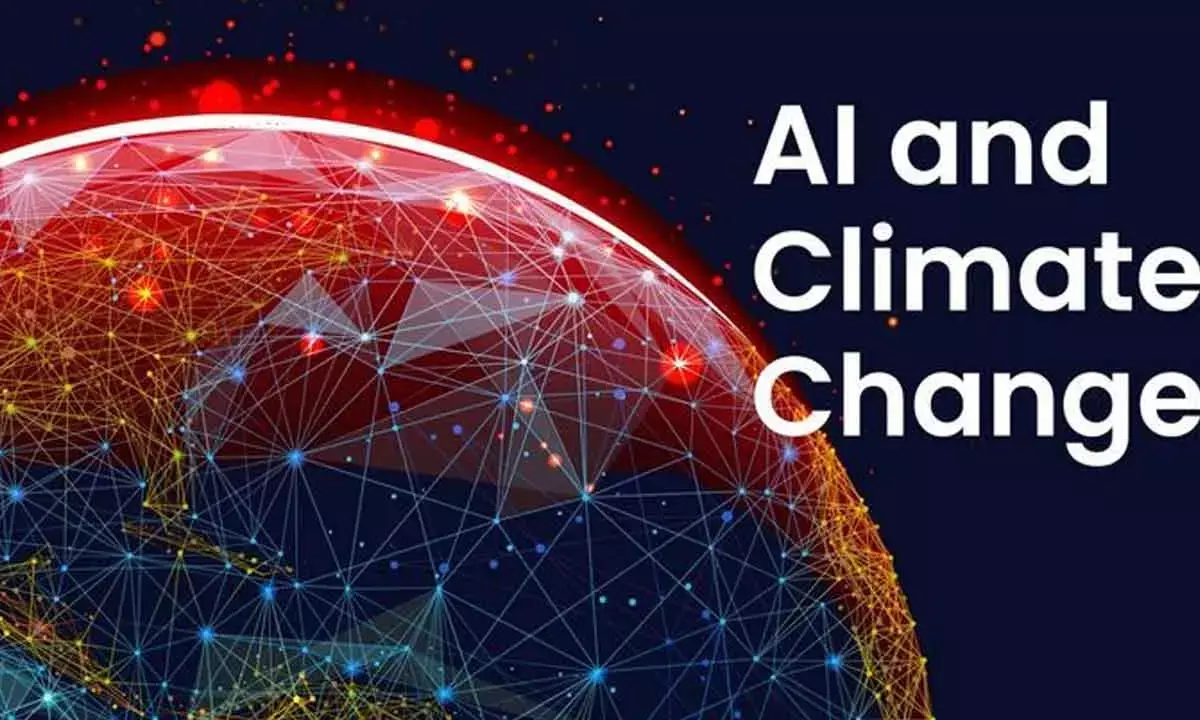Introduction
As the global community faces increasingly severe impacts of climate change, finding effective and innovative solutions has become a top priority. Artificial Intelligence (AI), with its vast capabilities and evolving technologies, has emerged as a powerful tool in the fight against climate change. From optimizing energy consumption to predicting extreme weather events, AI is transforming how we approach and address environmental challenges. This blog post explores the multifaceted role of AI in climate change solutions, highlighting its applications, benefits, and potential challenges.

Understanding AI’s Potential in Climate Change Solutions
AI, at its core, refers to the simulation of human intelligence in machines programmed to think and learn. Its applications in climate change solutions are varied and impactful, leveraging machine learning, data analytics, and automation to address environmental issues more efficiently than traditional methods.
1. Enhancing Energy Efficiency
One of the most significant contributions of AI is in improving energy efficiency. Traditional energy systems often involve significant waste and inefficiencies. AI can optimize energy usage in several ways:
- Smart Grids: AI-powered smart grids use real-time data to manage energy distribution more effectively. By predicting energy demand and adjusting supply accordingly, these systems reduce energy waste and improve the reliability of power grids.
- Building Management Systems: AI can control heating, ventilation, and air conditioning (HVAC) systems in buildings to ensure optimal energy use. Machine learning algorithms analyze data from various sensors to adjust settings in real-time, reducing energy consumption and lowering carbon footprints.
- Energy Consumption Forecasting: AI algorithms can predict energy demand patterns by analyzing historical data and current trends. This helps in making informed decisions about energy production and consumption, leading to more efficient use of resources.
2. Advancing Renewable Energy Integration
Renewable energy sources such as solar and wind power are crucial for reducing greenhouse gas emissions. AI enhances the integration and efficiency of these technologies:
- Predictive Maintenance: AI can monitor the health of renewable energy infrastructure, such as wind turbines and solar panels. Predictive maintenance algorithms analyze data from sensors to anticipate failures and schedule maintenance before problems occur, ensuring that renewable energy systems operate at peak efficiency.
- Energy Production Forecasting: AI models forecast energy production from renewable sources based on weather data and historical performance. This helps grid operators balance supply and demand, improving the reliability of renewable energy sources.
- Optimizing Energy Storage: AI helps manage energy storage systems by predicting energy production and consumption patterns. This optimization ensures that energy storage systems, such as batteries, are used efficiently to store excess renewable energy and release it when needed.

3. Improving Climate Modeling and Prediction
Accurate climate modeling and predictions are essential for understanding and mitigating the effects of climate change. AI enhances these processes through:
- Data Analysis: AI algorithms can analyze vast amounts of climate data, identifying patterns and trends that might be missed by traditional methods. This analysis improves the accuracy of climate models and predictions.
- Extreme Weather Prediction: AI can predict extreme weather events, such as hurricanes, heatwaves, and floods, by analyzing historical data and real-time information. Early warning systems powered by AI help communities prepare and respond to these events more effectively.
- Climate Simulation: Machine learning models simulate climate scenarios based on various factors, such as greenhouse gas emissions and land use changes. These simulations provide insights into potential future climate conditions and help in developing strategies for adaptation and mitigation.
4. Optimizing Agriculture and Land Use
Agriculture and land use significantly impact climate change through deforestation, land degradation, and greenhouse gas emissions. AI can optimize these practices to reduce their environmental impact:
- Precision Agriculture: AI-powered tools analyze data from satellite imagery and sensors to optimize agricultural practices. This includes precision irrigation, pest control, and nutrient management, leading to more sustainable farming practices and reduced environmental impact.
- Deforestation Monitoring: AI algorithms analyze satellite images to detect deforestation and illegal logging activities. This monitoring helps in enforcing regulations and protecting vital ecosystems.
- Soil Health Monitoring: AI systems analyze soil health data to recommend practices that improve soil quality and carbon sequestration. Healthy soils play a crucial role in capturing carbon dioxide and mitigating climate change.
5. Enhancing Climate Policy and Decision-Making
AI supports climate policy and decision-making by providing valuable insights and data-driven recommendations:
- Policy Simulation: AI models simulate the effects of different climate policies and regulations. This helps policymakers understand the potential outcomes of their decisions and design more effective climate strategies.
- Decision Support Systems: AI-powered decision support systems provide real-time information and recommendations for managing climate-related risks and opportunities. These systems help governments and organizations make informed decisions about climate action and resource allocation.
- Stakeholder Engagement: AI tools analyze public sentiment and feedback on climate policies and initiatives. This information helps in engaging stakeholders and developing policies that address their concerns and priorities.

Challenges and Considerations
While AI offers numerous benefits in addressing climate change, it also presents several challenges and considerations:
- Data Privacy and Security: AI systems rely on vast amounts of data, raising concerns about data privacy and security. Ensuring that data is protected and used responsibly is crucial for maintaining public trust.
- Ethical Considerations: AI applications in climate change must be designed and implemented ethically. This includes addressing issues such as algorithmic bias, transparency, and accountability in AI decision-making processes.
- Integration with Existing Systems: Integrating AI solutions with existing systems and infrastructure can be challenging. Ensuring compatibility and seamless operation requires careful planning and coordination.
- Resource and Skill Constraints: Developing and implementing AI solutions requires significant resources and expertise. Ensuring that the necessary skills and resources are available for successful AI deployment is essential.

Conclusion
Artificial Intelligence plays a transformative role in addressing climate change, offering innovative solutions to enhance energy efficiency, integrate renewable energy, improve climate modeling, optimize agriculture, and support climate policy. By leveraging AI’s capabilities, we can advance our efforts to mitigate and adapt to climate change, creating a more sustainable future. However, addressing challenges related to data privacy, ethics, integration, and resource constraints is crucial for maximizing AI’s potential in climate change solutions. As AI technology continues to evolve, its role in combating climate change will likely become even more significant, shaping the future of environmental stewardship and sustainability. Tech-arcis














